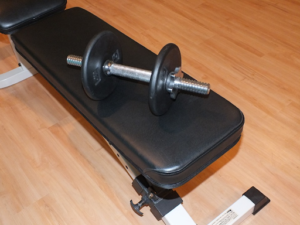With the development of sports and physical games in general, the professionals have become highly aware of the quality sports gear, sports fashion and sports accessories. For a century or more the manufacturing of sport related goods, like any other goods, have been completely dependent on traditionally manufacturing technologies. But with the discovery and evolution of 3D printing technology, the sports industry, just like every other industry, is being looked upon with a curious question: can 3D Printed sports equipment change the sports industry?
As 3D printing technology is still believed to be in its nascent stage, there cannot be a certain “yes,” or “no,” to this question. All we have at our disposal are factors that make us want to slide towards affirming and challenges that make us want to negate the chances. And it’s only by studying these factors and challenges, one can come to a definite conclusion.
Factors Favoring the Argument, “3D Printing Industry Will Change the Sports Industry.”
The US sports goods industry manages to raise around $40 billion annually through sports gear, fashion and accessories. On the basis of this, the worldwide estimates for the sports good industry can be calculated to reach $614.1 billion by 2022. All of the demand of current sport goods is fulfilled via traditional manufacturing techniques. But since the invention of 3D printing and its association with other industries, there are enough possibilities and scopes seen in the sport goods industry as well. And this is due to the factors mentioned below.
Personalized, high-quality sports equipment
3D printing and modeling technology is capable of customizing and personalizing. And this gives the freedom to sport goods manufacturers to create athlete-specific items. The limitation of traditional manufacturing technologies i.e. standardization, is completely eliminated when sport goods are manufactured using 3D printing technology. Also the goods manufactured with 3D printing technology are proven to be lighter and better suiting the precise needs of the biology of an athlete.
A major part of this work benefits Paralympic athletes that need more intricate, lighter body-fitting prostheses, wheelchairs and other such items. These need to be lighter in weight enough for generating the speed which is essential, at the same time it should be durable enough to withstand complete physical strain.
Projects that received successful outcomes in this area:
- Autodesk was able to provide Denise Schindler with a prosthetic that only took five days to print, which otherwise takes ten weeks to manufacture. This did cost five times more than the traditional one and did not have any possibility of hand-made errors.
- Cambridge Design Partnership was accurately able to scan an object, manipulate the data into a CAD system that was capable of producing prototypes using 3D printing technology. Prosthetics developed with the 3D models have been optimized and made into custom wheelchairs, designed on the basis of 3D scans of the athletes.
Improved Safety Gear with intricate geometries and materials
Experiments have been conducted by companies such as Riddell helmets for producing safer headgear for athletes. These helmets can find use in leagues such as the NFL, wherein there is a huge danger of head trauma that can set back any player for a long time. To ensure there are almost zero scopes of such potential injuries, equipment manufacturers are looking for an option in 3D printing technology.
Australian companies like startup Zweilkampf are 3D printing sport equipment that are aimed at achieving safety. This company’s shin guards are targeted towards soccer players and Austrain sports teams prefer it. There is another example of companies like Cavendish Imaging that aid English soccer players to build more and more comfortable protective masks for training and safer play.
GuardLab Inc. has teamed up with hockey gear manufacturer Bauer Hockey to produce a completely new line of 3D printed mouthguards. It was manufactured using 3D scanning and printing that resulted in Bauer APEX and APEX Lite Mouthguard product series. Pick 3D Printer has a list of the best professional 3D scanners that were used to make the 3D printed mouthguards.
Challenges Faced by 3D Printing in Sports Industry
There are three challenges identified by us as challenges faced by 3D printing in the sports industry.
3D printing sports goods is not as standardized as traditional sports goods
As we have traditional manufacturing techniques that have set standards for each and every sport product manufactured by them, 3D printing technology is yet to have such a specific set of standards. The experts point out how manufacturers and end users face a difficulty of starting with certainty how sports goods parts and functional prototypes produced by 3D printing. Without a certain set of guarantee, sports equipment manufacturers are bound to remain leery of additive manufacturing and specifically 3D printing by judging the risks of uncertain quality to be a very costly trade-off for gains they are yet to realize.
3D printing sports goods impacts environment badly
The most popular material in trend in general 3D printing is plastic filament. This practice compels us to not reduce our reliance with plastic. Other issues concern the use of plastics’ energy. Studies at Loughborough and MIT University found that 3D printers consume 50 to 100 times more electrical energy than traditional manufacturing techniques.
The production and equipment costs of 3D printing are much higher compared to traditional manufacturing techniques
The number one concern related to 3D printing is the use of professional 3D printers. Although the desktop 3D printers are available for a cost as low as $200, they are not as efficient. And the cost of professional 3D printers is not affordable by an average person. Especially 3D printing sports goods is not possible with desktop 3D printers!
The Conclusion
Overall, there are higher chances that 3D printed sports equipment is likely to change the sport industry because of higher amount of benefits than challenges. However, it completely depends on how this technology evolves from its current stage. It has started affecting almost every industry like fashion, jewelry, healthcare, aerospace and the list goes one. But in the sports industry, it has a much younger association than in others. So, you should be looking forward to seeing the change.




